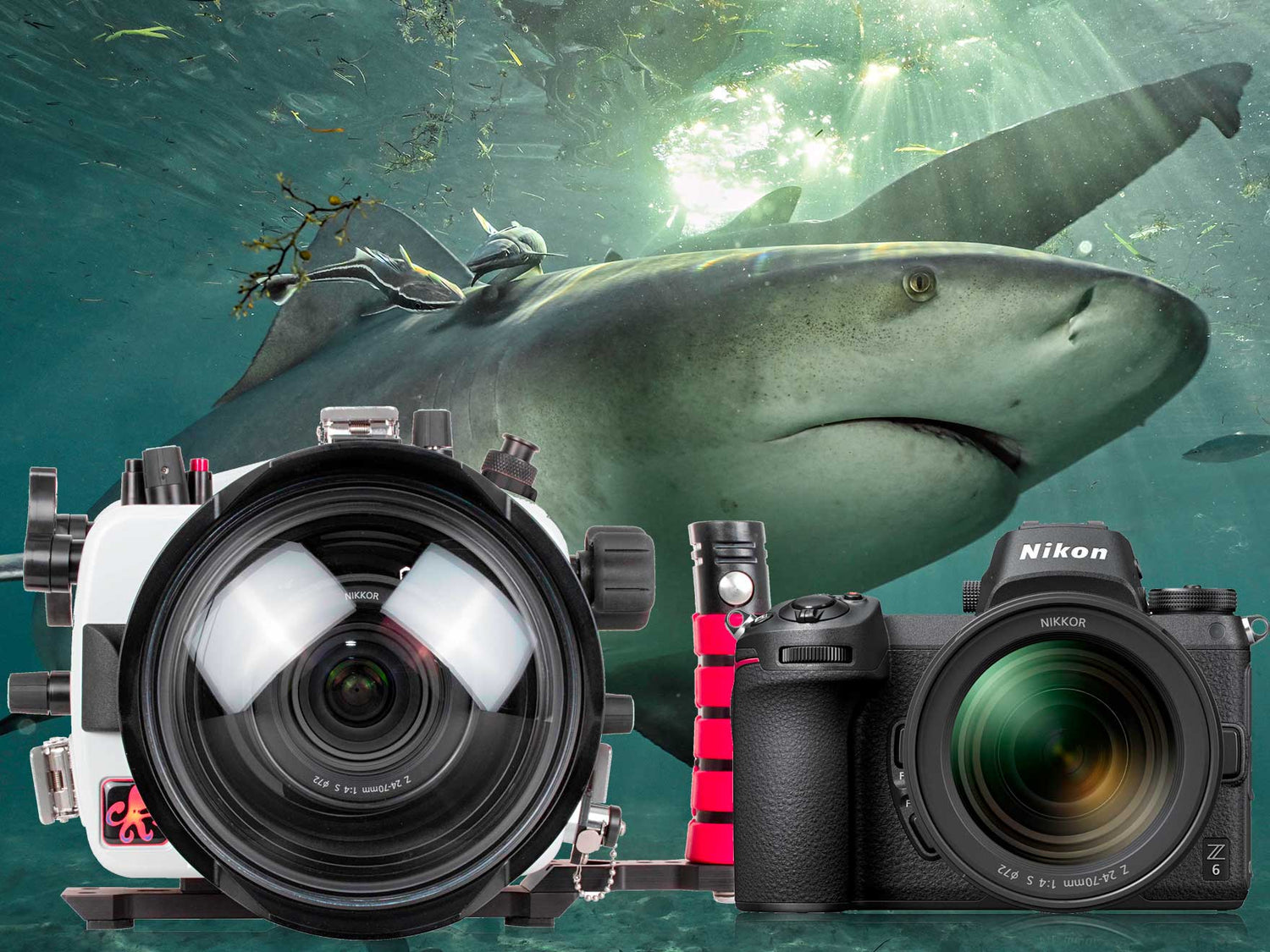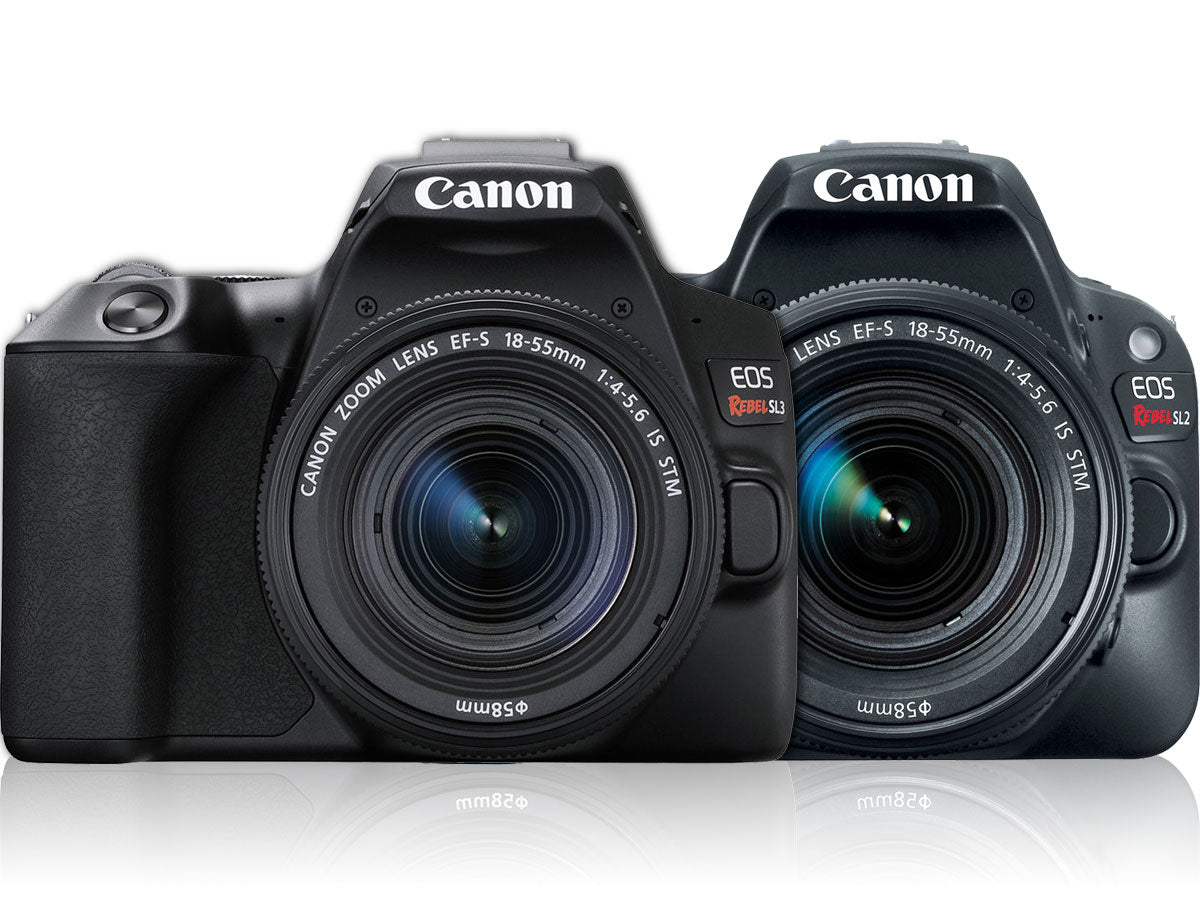By Ambassador Glenn Ostle
After almost 25 years photographing underwater, beginning with Nikonos cameras in the early 90s and working my way through six SLR and DSLR cameras, all in Ikelite housings, I finally made the move to mirrorless in late 2018. Initially, I just wanted to lighten my setup and stay abreast of new technology. But I’ve since found a number of other reasons why the move made sense.
As I’ve used Nikon products all my life, I felt comfortable diving into the mirrorless age with the new 24.5 megapixel Z6, Nikon's first full frame mirrorless, interchangeable lens camera. As I planned to use the Z6 extensively underwater, I quickly ordered the new DL200 housing, 8” dome and necessary extensions from Ikelite. While waiting for the housing and dome to arrive, I had the chance to familiarize myself with the camera and found it packed full of useful options. But what impressed me most was the incredibly sharp focus provided by the EVF (electronic viewfinder), and the clarity, large size and usefulness of the LCD rear screen.

ISO 500 • f/9 • 1/100 • A live aboard in the Maldives was the perfect place to check out both wide angle and macro performance with the Nikon Z6 camera.
When I purchased my Z6, I also bought the 24-70/4S lens, one of the few dedicated Z-mount lenses available when the camera was introduced. I thought this mid-range zoom lens would be perfect for many types of underwater shooting. In addition, the FTZ adapter that came with the camera, gave me the option of being able to use a number of my newer F-mount lenses.
When my housing arrived, it was time to hit the water. My partner, Pam Hadfield, and I had several dive trips coming up that would serve as great places to try out my new setup, which also included a pair of Ikelite DS160 strobes.

ISO 100 • f/8 • 1/200 • A divemaster from Neal Watson's Scuba Center hand feeds a large tiger shark during the hammerhead shark dive.
First stop was Bimini in January to photograph the hand-feeding of large Hammerhead Sharks that congregate around the island at that time every year. In 30’ of water, the excellent dive masters from Neal Watson’s Scuba Center hand fed fish to the large sharks while we knelt in the sand photographing and trying to keep pace with the fast action. We were pleasantly surprised to see large Tiger Sharks and Nurse Sharks also join in the feast.

ISO 450 • f/9 • 1/250 • Using live view on the rear LCD made it easy to keep track of the large sharks swimming close by and fine-tune exposure settings.
As we were fairly shallow on a bright sunny day, and the water color was a beautiful constant blue, I opted to photograph the sharks using the LCD rear screen by choosing apply settings to live view in the menu. I then supplemented this with strobes, as needed. This was a change from “peeking” through the viewfinder for the entire dive as I’ve typically done in the past.
The LCD screen is big and bright and provides a corner-to-corner view of the image. And as the effect of changing exposure settings showed immediately on the screen, what I saw was what I was getting, so I was able to quickly fine-tune every shot. Using this technique also made it easier to keep track of the large sharks that were swimming close by.
Back at the marina, we found that the shop had attached a small cage to the dock, serviced by a hookah surface-supplied air system. By dropping down into this cage, Pam and I were able to get a close view of the 8-9’ Bull Sharks constantly swimming lazily around boats in the marina.

ISO 900 • f/13 • 1/250 • A small cage off the dock provided the perfect vantage point to photograph bull sharks and other marine life that hung around the boats in the marina.
Again, the Z6 performed beautifully in the greener water and captured the late afternoon sunbeams streaming down. Once again, shooting using the screen on the back of the camera allowed me to frame the sharks in the sun rays and also keep a close eye on the large predators that at times were right in our faces.

ISO 200 • f/6.3 • 1/60 • A colorful reef scene from the Maldives. The Nikon Z 24-70mm F4 S lens provides sharp images corner to corner behind an 8" dome.
Our next trip was a few months later when we joined a group of friends on a live aboard in the Maldives to dive the thilas (underwater islands) and heavy current passages of a number of the islands and atolls in that beautiful water-filled country. Here, too, I used the LCD extensively to photograph large animals using the 24-70/4S lens. For even wider shots, like colorful reef scenes, large Manta Rays, and groups of eels poking their heads out of holes in the reef, I took advantage of the FTZ adapter which allowed me to use my Nikon 16-35 1:4 G ED lens.

ISO 500 • f/9 • 1/100 • Nikon F-mount lenses like the 16-35mm f/4G ED lens also performed very well with the FTZ adapter.
When photographing smaller subjects where the strobes accounted for most of the light, I switched off the apply settings to live view option, which decoupled the finder from the exposure settings, and used my viewfinder. A button on the camera makes it possible to switch back and forth between the screen and viewfinder.

ISO 500 • f/8 • 1/125 • It's simple to switch back and forth between live view and EVF shooting. Live view is great for reef scenes and fast moving animals while the EVF is ideal for macro shooting. Adding a 45º Magnified Viewfinder makes macro shooting immensely more pleasurable.
I have been extremely pleased with my photos from the Z6, as well as with the new Ikelite Dry Lock housing. I’ve always been impressed with the quality and durability of my previous Ikelite housings, but I quickly became sold on the new Dry Lock system. Being able to see the camera through the clear housing back has always made me feel secure. Now, the ability to be able to connect the DL ports and extensions and hold them securely in place with screw-downs, coupled with Ikelite’s vacuum system, greatly enhanced that sense of security.

ISO 200 • f/7.1 • 1/100 • This nurse shark was ready for his close-up. Shot at 44mm using the Nikon Z 24-70mm F4 S lens.
Waiting for us when we arrived home, was the most recent Z-mount lens from Nikon, the ultra-wide 14-30/4S. Based on my experiences with the camera and housing so far, I can’t wait to get back in the water to try out this lens that one reviewer, calls “the sharpest 14mm lens I’ve ever tested for Nikon.”
 Ambassador Glenn Ostle grew up with an interest in photography but didn't initially want to take it underwater. But it was all over after he was gifted a Nikonos camera in 1995. Now he's on his 7th camera update and travels the world honing his craft. He combines his photography skills with a writing ability honed through more than 30 years working in marketing and publishing. Read more...
Ambassador Glenn Ostle grew up with an interest in photography but didn't initially want to take it underwater. But it was all over after he was gifted a Nikonos camera in 1995. Now he's on his 7th camera update and travels the world honing his craft. He combines his photography skills with a writing ability honed through more than 30 years working in marketing and publishing. Read more...
All images copyright © 2019 Glenn Ostle
Additional Reading
First Look Nikon Z6, Z7 Mirrorless Underwater Housing
Shark Photography Underwater Camera Settings
DL1 DS Link Nikon TTL Converter Underwater Photos
Crocodiles, Cenotes, and Chinchurro with Ken and Kimber Kiefer













![The Rapture of the Deep | Maldives with the Panasonic GH5 [VIDEO]](http://www.ikelite.com/cdn/shop/articles/matt-jacobs-rapture-of-the-deep_47e1402b-260c-4d1d-88b5-4ec93e6d005a.jpg?v=1645884050&width=2000)